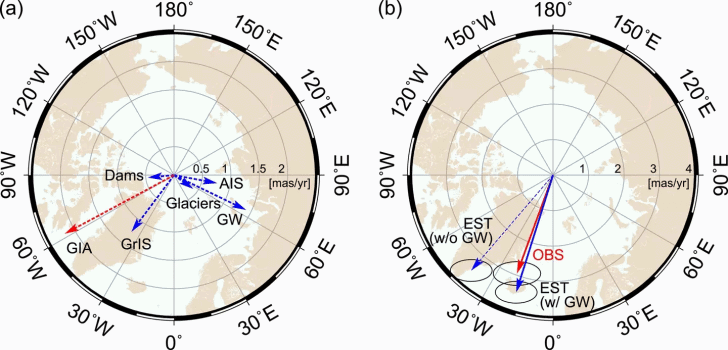This shift, revealed in a study published in Geophysical Research Letters.
Is primarily attributed to the redistribution of groundwater caused by large-scale human consumption and agricultural irrigation.
Between 1993 and 2010 alone, an estimated 2,150 gigatons of groundwater were extracted and eventually flowed into the oceans. Contributing to a 0.24-inch rise in global sea levels.
Geophysicist Ki-Weon Seo from Seoul National University explains, “Among climate-related causes, the redistribution of groundwater actually has the largest impact on the drift of the rotational pole.”

Earth’s tilt and rotation are influenced by shifts in mass, which are significantly altered as water moves from midlatitude regions.
Such as western North America and northwestern India, into the oceans.
This finding underscores the profound relationship between human activities and Earth’s planetary systems.
Groundwater Depletion and Its Global Impact
Groundwater, essential for human survival and ecological balance, is sourced from rainfall and stored in underground aquifers.
It serves as a critical resource for drinking water, agriculture, and industry, especially in arid regions. However, its over-extraction has unintended consequences.
By changing the distribution of mass on Earth, groundwater depletion significantly contributes to polar motion—the shifting of the planet’s rotational pole.

The study revealed that excluding groundwater effects in climate models leads to noticeable discrepancies between predictions and observed data, confirming groundwater’s significant role in Earth’s tilt and rising sea levels. NASA research scientist Surendra Adhikari emphasized, “They’ve quantified the role of groundwater pumping on polar motion, and it’s pretty significant.” Though the tilt itself may seem minor, its long-term accumulation exacerbates ongoing climate challenges.
Polar motion data also provide a valuable historical record, offering insights into past changes in water storage and the cumulative impacts of human activity on Earth’s hydrological cycle. This connection highlights how local groundwater extraction directly influences global environmental patterns.
Path Forward: Awareness and Solutions
While the findings are alarming, they present an opportunity for action. Understanding the connection between groundwater depletion and planetary changes can inspire strategies to mitigate these effects. Seo notes, “Observing changes in the Earth’s rotational pole is useful for understanding continent-scale water storage variations.” This knowledge can inform sustainable water management policies and practices at both local and global levels.
Potential solutions include rainwater harvesting, advanced irrigation techniques, and more efficient water policies. Achieving meaningful progress will require global cooperation, balancing the need for groundwater with the necessity of preserving the environment.
Earth’s tilt serves as a stark reminder of humanity’s profound impact on natural systems. By recognizing this interconnection, individuals and governments can take steps to mitigate further damage.
As Seo reflects, “As a resident of Earth and a father, I’m concerned and surprised that pumping groundwater is another source of sea-level rise.”
Awareness, he suggests, is the first step toward change, offering hope that through sustainable action, we can protect our planet for future generations.
